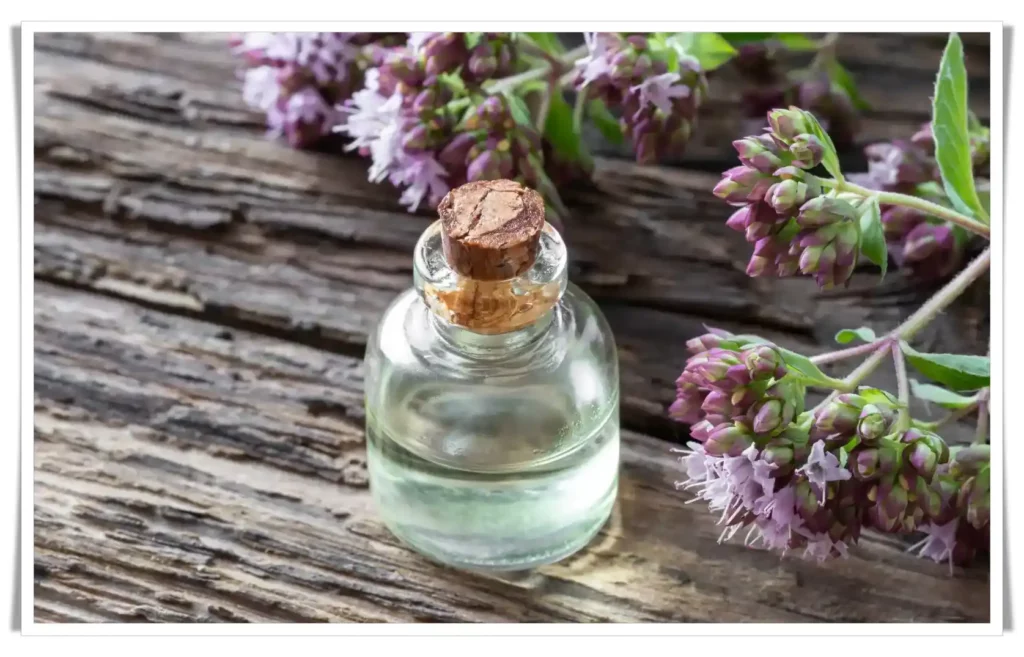Introduction
In a world where the well-being of our health seems to be at the mercy of an endless stream of medications and pills, it's more imperative than ever to make well-informed decisions about the kind of substances we introduce to our bodies. The choice between synthetic antibiotics and natural antibiotics is one such crucial decision that bears significant implications for our overall health.
Empower Your Health Journey – Explore My Free Apps for a Vibrant, Healthier Lifestyle Today!
Through the lens of two decades of insights into healthy living, allow me to guide you through a critical exploration of this timely issue. In this detailed narrative, we will voyage through the intricate web of synthetic antibiotics, unravel the potential dangers that lurk within their overuse, and explore the promising horizon of natural alternatives that beckon with a beacon of hope and efficacy.
So, come along as we embark on this educational journey, offering you a treasure trove of information designed to help you choose wisely in a world brimming with both synthetic and natural solutions to bacterial infections.
Historical Background
The Journey from Penicillin to Modern-day Antibiotics
The battle against bacterial infections took a promising turn with the synthesis of the first antibiotic, penicillin, by Alexander Fleming in 1928. This marked the onset of a new era in medical history where diseases that were once deemed fatal started meeting their match. However, as we progressed, the magic of synthetic antibiotics began to fade, with issues such as antibiotic resistance and adverse effects on the human body coming to the forefront. Interestingly, alongside the journey of synthetic antibiotics, natural antibiotics have traced a parallel path, utilized in various cultures as potent remedies against infections, offering a beacon of hope and a return to nature in our fight against bacterial infections.
Synthetic Antibiotics vs Natural Antibiotics
What are Synthetic Antibiotics and What are Natural Antibiotics?
In the modern medical landscape, the dichotomy between synthetic antibiotics and natural antibiotics stands prominent. Synthetic antibiotics, developed in laboratories, have long been the mainstay in fighting bacterial infections. They come with a promise of quick and potent action against bacterial strains, but at a significant cost. The adverse effects associated with synthetic antibiotics have led to an alarming situation where over 25,000 people succumb to its repercussions annually in the European Union alone.
On the other hand, natural antibiotics, derived from nature, offer a gentler yet effective approach to combating bacterial infections. These antibiotics, encapsulating the essence of nature, bring forth the healing properties of various plants and substances that have been revered in traditional medicine systems worldwide. From the immunostimulating prowess of garlic to the antibacterial abilities of Manuka honey, natural antibiotics beckon with a promise of healing harmoniously aligned with nature's rhythm.
The Pros and Cons
The journey of understanding synthetic antibiotics and natural antibiotics takes us to a juncture where we need to delve deeper into the pros and cons associated with each. Synthetic antibiotics, though a marvel of medical science, have shown their dark side too. Overuse and misuse have led to a myriad of problems including disruption of the immune system, toxicity in the liver and kidneys, and fostering antibiotic resistance among microbes. This necessitates increased dosages or even stronger variants, which can be a slippery slope to more significant health issues.
Conversely, natural antibiotics have stood the test of time, showcasing potent antibacterial properties without fostering resistance. These substances, sourced from nature, not only fight against pathogens but also work harmoniously with the body, fostering overall well-being.
As we navigate through the complexities of synthetic antibiotics and natural antibiotics, we must pause and ponder upon the effects of antibiotic abuse and its grave repercussions. Remember, the wisdom lies in making informed choices and embracing methods that foster not just healing, but holistic well-being.
Exploring Natural Alternatives
At this juncture, we must turn our attention to the beacon of hope in the form of potent natural antibiotics. As we venture further, we will delve deep into the world of natural antibiotics, exploring the powerhouse of benefits they encapsulate. Stay tuned as we unravel the wonders of garlic, echinacea, Manuka honey, and more in the subsequent sections.
The Dangers of Synthetic Antibiotics: A Growing Concern
In our relentless pursuit to overcome bacterial infections, we often turn to synthetic antibiotics as the immediate solution. However, this approach can sometimes lead to detrimental consequences, which necessitate a deeper understanding and a call for prudence. In this segment, we will explore the growing concerns associated with the overuse of synthetic antibiotics.

Alarming Statistical Data
- Annual Fatalities: According to reports from the European Union, over 25,000 people succumb to antibiotic-resistant infections annually. This highlights the serious repercussions of antibiotic misuse.
- Resistance Development: Since the discovery of the first antibiotic, penicillin, in 1928, the overreliance on synthetic antibiotics has fostered an environment where bacteria rapidly develop resistance. This makes subsequent infections even harder to treat.
- Disruption of the Immune System: Frequent use of synthetic antibiotics can compromise the body's natural defence mechanisms, leaving individuals more susceptible to infections in the long run.
Examples of Negative Repercussions
- Disturbed Gut Flora: The administration of synthetic antibiotics can disrupt the delicate balance of the intestinal flora, leading to digestive issues and other health problems.
- Allergic Reactions: Particularly among children, synthetic antibiotics have been known to cause allergic reactions, sometimes even leading to severe health complications.
- Increased Candida Growth: Synthetic antibiotics can cause an imbalance in the body's pH level, encouraging the overgrowth of the fungus Candida, which can lead to various health issues including fatigue and digestive problems.
- Liver and Kidney Toxicity: The overuse of synthetic antibiotics can exert a high level of stress on vital organs such as the liver and kidneys, potentially leading to toxicity and long-term damage.
Making an Informed Choice
Understanding the consequences of synthetic antibiotic overuse prompts us to think about alternative avenues for addressing bacterial infections. Natural antibiotics have emerged as a promising alternative, with substances like garlic, echinacea, and manuka honey offering potent antibacterial properties without fostering bacterial resistance.
Furthermore, it becomes pivotal to foster a culture where antibiotics are used judiciously, with appropriate guidance from healthcare professionals, to prevent the escalation of antibiotic resistance and safeguard public health.
Natural Antibiotics: A Viable Alternative
In the midst of the concerning statistics surrounding synthetic antibiotics, a beacon of hope emerges in the form of natural antibiotics. These are not only a reservoir of healing properties but also offer a sustainable, effective, and balanced approach to combating infections. In this segment, we will delve deep into the fascinating world of natural antibiotics, substantiating our discussion with case studies and examples that underscore their efficacy.
1. Garlic: The Ancient Healer
Garlic, a renowned natural antibiotic, has been utilized for centuries owing to its potent immunostimulating and antibacterial properties. The secret behind its power lies in a compound called allicin, which can effectively combat a myriad of ailments ranging from otitis to pneumonia.
Case Study: A 2012 study published in the "Journal of Antimicrobial Chemotherapy" found that a compound derived from garlic showed promising results in fighting the hard-to-treat Campylobacter bacterium, commonly found in undercooked poultry.
2. Echinacea: Nature's Shield
Echinacea, a popular medicinal plant, has garnered attention for its impressive immune-boosting capabilities. Traditionally, it was used to treat open wounds and various infections. Recent studies validate its potential in destroying potent bacteria such as Staphylococcus aureus.

Example: People have found relief from cold and flu symptoms by incorporating echinacea supplements into their daily regimen, showcasing its potential as a natural antibiotic.
3. Manuka Honey: A Sweet Remedy
Renowned for its broad-spectrum antimicrobial properties, Manuka honey is effective against a wide array of pathogens. It is unique in its ability to prevent bacterial resistance, making it a viable alternative to synthetic antibiotics.
Case Study: A study published in the "Frontiers in Microbiology" journal demonstrated Manuka honey's effectiveness in inhibiting the growth of bacterial biofilms found in chronic wounds, presenting a promising avenue for medical treatment.
4. Propolis: The Protector
Propolis, a resinous substance collected by bees from tree buds, has shown remarkable pharmacological properties. As a natural antibiotic, it can effectively treat upper respiratory infections and various skin diseases.
Example: Propolis has been utilized as a natural remedy to accelerate the healing process of burns and cuts, reducing pain and minimizing scars.
5. Oil of Oregano: A Herbal Powerhouse
Derived from wild oregano, oregano oil displays a rich profile of antiviral, antiseptic, and anti-inflammatory properties. It is particularly beneficial for treating sinus and upper respiratory tract infections.

Case Study: A study highlighted in "The Journal of Applied Microbiology" demonstrated that oregano oil was effective against a variety of pathogens, showcasing its potential as a potent natural antibiotic.
6. Ginger: The Root of Wellness
Ginger, a root renowned for its anti-inflammatory and antioxidant properties, has demonstrated effectiveness against oral pathogens and gram-negative bacteria, offering a natural solution to various ailments.
Example: Incorporating ginger into daily diets has proven beneficial in relieving intestinal problems and reducing inflammation in the brain.
7. Colloidal Silver: The Ancient Solution
Colloidal Silver, a suspension of fine silver particles in a liquid, has been used for centuries as a natural antibiotic. It has shown effectiveness against bacteria and extracellular viruses.
Case Study: Research shows that colloidal silver can be used both internally and externally to speed up the healing process of wounds and minimize pain.
Conclusion: Making a Wise Choice
In light of the growing concerns surrounding synthetic antibiotics, the natural alternatives presented offer a ray of hope. These natural antibiotics not only demonstrate promising results in combating infections but also align with the body's natural defences, fostering a holistic approach to health and wellbeing.
Encouraging further research and embracing these natural remedies could potentially revolutionize the way we approach healthcare, paving the way for a healthier, more balanced future.
Case Study
In this section, we will scrutinize scientific studies that elucidate the effectiveness and advantages of both synthetic and natural antibiotics. One remarkable study that stands out in this regard is conducted by Charles P. Boyd during the California State Science Fair 2008. Let us take a moment to comprehend the insights drawn from this vital research.
A Comparative Analysis of Natural and Pharmaceutical Antibiotics - Charles P. Boyd (2008)
Objective: The core objective of Charles P. Boyd's project was to ascertain whether certain natural antibiotics could rival the efficacy of synthetic or pharmaceutical antibiotics in either halting the growth or eliminating bacteria that induce disease or infection in humans.

Methods and Materials: Charles conducted two separate experiments employing the same natural and pharmaceutical antibiotics. These included natural agents like Grapefruit Seed Extract, Olive Leaf Extract, Tea Tree Oil, Garlic, Oil of Oregano, and Raw Unfiltered Honey, and pharmaceutical antibiotics such as Amoxicillin, Erythromycin, and Tetracycline. The experiments incorporated the use of bacteria strains like Serratia Marcescens, Streptococcus Lactis, and E-Coli. Utilizing sterile paper disks soaked in the aforementioned antibiotics, Charles applied them to agar surfaces inoculated with the bacteria strains, measuring any bactericidal action at 24 and 48-hour intervals.
Results: The experiments revealed that some natural antibiotics displayed a potency comparable to their pharmaceutical counterparts. For instance, in Experiment I, Amoxicillin showcased the highest effectiveness in inhibiting the growth of all three bacterial strains, followed closely by natural antibiotics like Tea Tree Oil and Grapefruit Seed Oil. On the other hand, Experiment II highlighted Tea Tree Oil as the most effective antibiotic, surpassing Amoxicillin, Tetracycline, and Erythromycin in inhibiting bacterial growth.
Conclusions: Boyd concluded that certain natural antibiotics exhibit effectiveness akin to pharmaceutical antibiotics in combating bacterial growth. A significant finding was that these natural agents do not induce drug resistance, a common issue with pharmaceutical antibiotics. The study underscores the necessity for further research in this domain, aiming to incorporate natural substances as viable alternatives to synthetic antibiotics and thereby curtailing the surge of drug-resistant bacteria in humans.
Help Received: The project was facilitated with assistance from Dr. Roy Grekin and Dr. Dale Ritzo, who provided the pharmaceutical antibiotics, and Susan Bachus, who supplied the necessary bacteria for the experiments. Additionally, Charles' mother aided in assembling the materials required for the project.
Reference: [California State Science Fair 2008 Project Summary - Charles P. Boyd]
Table With Reputable Sources
| Source Title | Description | Link |
|---|---|---|
| Journal of Antimicrobial Chemotherapy | A peer-reviewed journal showcasing studies on antimicrobials | View Source |
| Frontiers in Microbiology | An open-access journal publishing research on microbiology | View Source |
| The Journal of Applied Microbiology | A journal focusing on original research in applied microbiology | View Source |
| National Center for Complementary and Integrative Health (NCCIH) | A scientific research agency focused on complementary health approaches | View Source |
FAQ Section
1. What are synthetic antibiotics?
Answer: Synthetic antibiotics are medications developed in laboratories to kill or inhibit the growth of bacteria. They have been widely used since the discovery of penicillin in 1928 and have saved countless lives. However, their overuse has led to the development of antibiotic-resistant strains of bacteria, which can pose significant health risks.
2. Are natural antibiotics a safer alternative to synthetic ones?
Answer: Natural antibiotics, derived from plants, fungi, and other organic sources, can sometimes be a safer alternative as they tend to have fewer side effects compared to synthetic antibiotics. Moreover, bacteria are less likely to develop resistance against them. It is important to note that their efficacy can vary, and they should be used under medical guidance.
3. How can I include natural antibiotics in my daily diet?
Answer: Incorporating natural antibiotics into your diet can be fairly simple. Many herbs, spices, and foods have antibiotic properties. Including garlic, ginger, honey, and various herbal teas in your meals can boost your immune system and act as a natural antibiotic. However, always consult with a healthcare provider before making any substantial changes to your diet or health regimen.
4. What are the potential side effects of a synthetic antibiotic?
Answer: Synthetic antibiotics can have various side effects, including allergic reactions, stomach issues, and disruption of the natural flora of the digestive system. In the long term, the misuse of synthetic antibiotic can lead to the development of antibiotic-resistant bacteria, making infections harder to treat.
5. Can I use natural antibiotics for any kind of infection?
Answer: While natural antibiotics can be effective in treating a range of minor infections, they might not be potent enough for more serious infections. It's essential to consult with a healthcare provider to determine the most appropriate treatment for any infection, be it with natural or synthetic antibiotics.
6. How are natural antibiotics sourced?
Answer: Natural antibiotics are sourced from various natural elements including plants, herbs, and some foods. These substances have innate properties that can inhibit bacterial growth or boost the body's immune responses.
7. Are there studies backing the efficacy of a natural antibiotic?
Answer: Yes, there have been numerous studies conducted to evaluate the efficacy of a natural antibiotic. Many of these studies, like the one conducted by Charles P. Boyd for the California State Science Fair in 2008, have found that certain natural antibiotics can be as effective as synthetic ones in inhibiting bacterial growth.
In this flowchart:
- The user starts by identifying whether they have a bacterial infection.
- Based on the advice of a healthcare provider, they then research either synthetic or natural antibiotics, learning about their benefits and potential side effects.
- Following this research, they make an informed decision, possibly seeking alternatives and repeating the process until they choose a course of treatment.
- If they do not have an infection, they focus on preventive measures and maintaining a healthy lifestyle.
Conclusion
Navigating the world of antibiotics can often feel like a daunting task, especially with the array of choices available to us today. As we stand at this crossroads, a deeper understanding of both synthetic antibiotics and natural antibiotics becomes essential. This article has aimed to shed light on the respective merits and demerits of both avenues, with a special focus on the potential dangers associated with synthetic antibiotic overuse and the promising prospects of natural alternatives.
As we have witnessed, synthetic antibiotics, though a groundbreaking invention in the realm of medicine, come with their fair share of adverse effects. Their widespread misuse has led to a rise in antibiotic-resistant bacteria, a crisis that cannot be understated. Meanwhile, the resurgence in the use of natural antibiotics offers a beacon of hope. These nature-derived wonders, with their potent antibacterial properties and fewer side effects, beckon a future where a harmonious balance between efficacy and safety might be attainable.
Now, the mantle of responsibility passes onto you, the readers. It is up to each individual to make informed choices when it comes to their health. As you ponder over the information shared, we invite you to delve into the deep-seated connection between the food industry and the pharmaceutical sector in our other insightful article “The Brotherhood Between the Food Industry and Pharma Industry - The Best Marketing Ever!”. Moreover, for a visual treat that will further enhance your knowledge, watch “The Effects of Processed Meat on Your Health” on our YouTube channel.
Thank you for being an integral part of this journey towards a healthier, informed world. Remember, your voice matters. Let's keep this conversation going!
References
In crafting this comprehensive article, we referred to numerous reputable sources to ensure accuracy and depth. Here is a collection of the key references utilized:
- CDC (Centers for Disease Control and Prevention)
- Antibiotic Resistance Threats in the United States, 2019. Link to the document
- World Health Organization
- Antibiotic Resistance: Multi-country public awareness survey, 2015. Link to the document
- NCBI (National Center for Biotechnology Information)
- The Role of Natural Products in the Discovery of New Drug Candidates for the Treatment of Infectious Diseases, 2011. Link to the document
- Food and Agriculture Organization of the United Nations
- The State of the World's Antibiotics, 2021. Link to the document






Posts that can provoke thought in both sexes are my favourite to read. Moreover, I appreciate the opportunity to provide feedback.
I very delighted to find this internet site on bing, just what I was searching for as well saved to fav
Great information shared.. really enjoyed reading this post thank you author for sharing this post .. appreciated
Although I naturally enjoy your website, I would like to point out that you need to check the spelling of a few of your postings. There are a number of them that are riddled with spelling errors, and to tell you the truth, I find it really annoying. On the other hand, I will definitely come back again in the soon future.
Thanks I have just been looking for information about this subject for a long time and yours is the best Ive discovered till now However what in regards to the bottom line Are you certain in regards to the supply
I am not sure where youre getting your info but good topic I needs to spend some time learning much more or understanding more Thanks for magnificent info I was looking for this information for my mission
I just like the helpful information you provide in your articles
I rarely read blog posts, but this one made me do so. Your writing style is amazing. Thanks for a fantastic post.
I really like reading through a post that can make men and women think. Also, thank you for allowing me to comment!
Attractive section of content I just stumbled upon your blog and in accession capital to assert that I get actually enjoyed account your blog posts Anyway I will be subscribing to your augment and even I achievement you access consistently fast
Usually I do not read article on blogs however I would like to say that this writeup very compelled me to take a look at and do so Your writing taste has been amazed me Thanks quite nice post
you are truly a just right webmaster The site loading speed is incredible It kind of feels that youre doing any distinctive trick In addition The contents are masterwork you have done a great activity in this matter
I really like reading through a post that can make men and women think. Also, thank you for allowing me to comment!
I just like the helpful information you provide in your articles
Great information shared.. really enjoyed reading this post thank you author for sharing this post .. appreciated
Wow, superb weblog layout! How lengthy have you been running a blog for?
you make running a blog glance easy. The full look
of your site is wonderful, let alone the content material!
You can see similar: ecommerce and
here sklep online
Good way of describing, and good piece of writing to obtain facts regarding
my presentation focus, which i am going to present in university.
I saw similar here: E-commerce